The very famous Egon Schiele
- 10/05/2021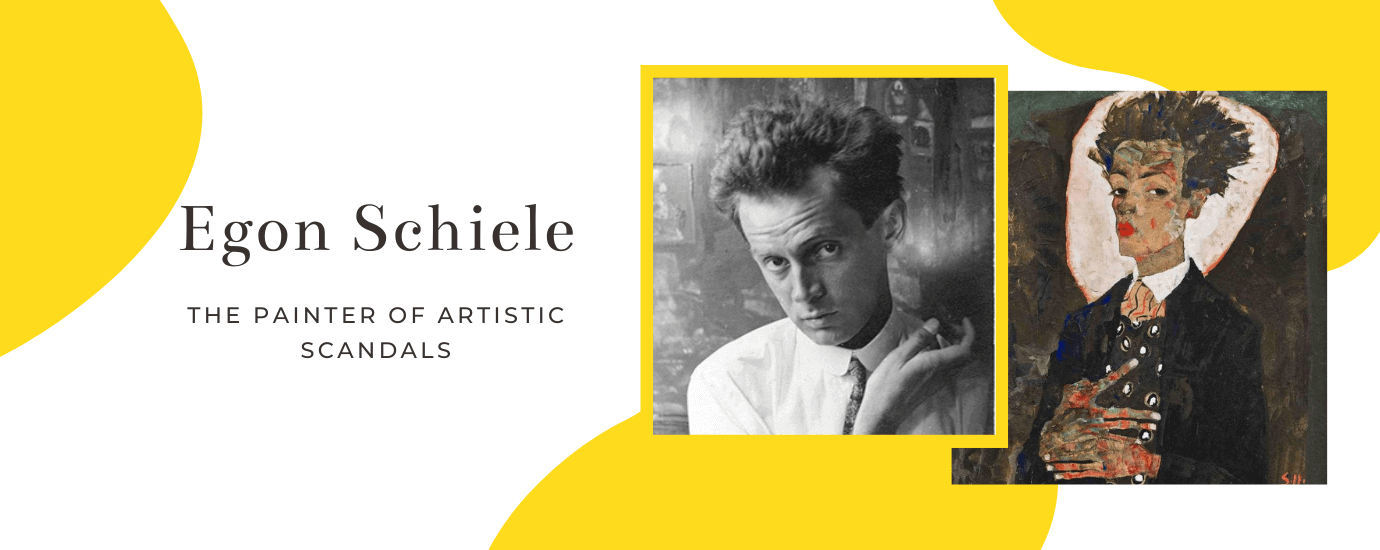
Siblings could have been composed of more members, but fate turned against the children of Marie Schiele who gave birth to a stillborn boy in 1881 and who lost one of his daughters, Elvira, born in 1883, then aged 10 years old.
This fragile family balance is cracked more when Adolf Schiele contracts a fatal syphilis that he refuses to heal, abandoning then his family in 1905.
These tragedies have undoubtedly influenced the work of Egon Schiele, hypersensitive of temperament.
How not to think about his painting Egon Schiele Tote Mutter (1910), where this composition in three layers depicts the love-pain of a mother for a child who has not had a chance to emerge.
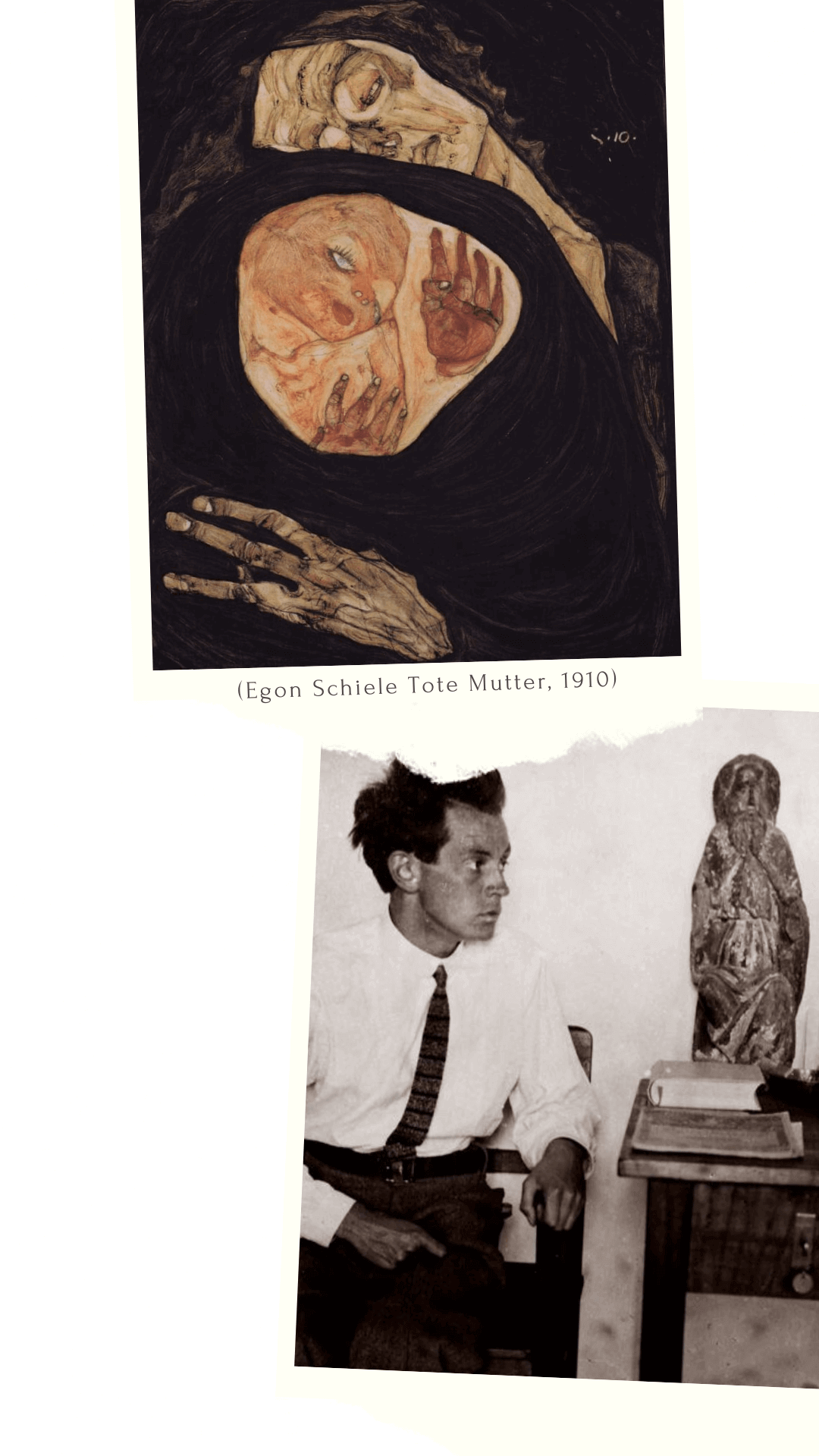
Early, his appetite for drawing led him to sublimate and transcend this countryside.
Later, his painting Four Trees (1917), although then torn between his morbid inspirations of time and thirst for nature perfectly transcribe his first pencil strokes of his childhood. Another favorite topic of the child Egon Schiele is trains, that he collects and draws it supremely well.
His father then saw the sign that his only son will take over his station agent job and encouraged him in this way, going even to burn some of his sketchbooks that do not represent those iron machines steam.
The gradual deterioration of the health of the father and his early death, combined with maternal dramas, then provide Egon Schiele a vision of a dark world, tormented and sad.
An vision enhanced by the fact that, in the early 1900s, Vienna is "the capital of suicide":
Ludwig Boltzmann, Otto Mahler, Richard Gerstl, Georg Trakl or Otto Weininger are among the famous people who kill themselves.
"IF HE HAS TALENT? YES TOO MUCH"
The brother-in-the-law of his father, Leopold Czihaczek, also station agent, ties the knot with Marie Schiele and becomes the guardian of Egon.
Against the advice of the latter, who wants to turn it into a railway employee, Schiele continues drawing and entered the School of Arts in Vienna where Gustav Klimt also studied.
After a year of study in 1906, and reviews of several members of the School, Schiele was sent to the very classic and rigorous Academy of Fine Arts in Vienna.
When his mother inquires with the fierce professor of the Academy, Christian Griepenkerl, about the talents of his son, he replied "If he has talent? Yes too much. He puts some mess in the whole class."
His first works are loosely inspired by Impressionism, but his attraction to the Vienna Secession strikes him.
Admiring and very marked by the works of Gustav Klimt, there are even some decorative elements of the "golden painter" in the paintings of Schiele.
In 1907, when they met, Gustav Klimt, then 45 years old, encourages the young Schiele and introduces him some of its models and its patrons.
Significant of the relationship between the two men, Schiele think even to rename "the Klimt Silver".
Other influences then gradually build the palette and style of Schiele, from Van Gogh to Holder through Minne and even Munch who he shares the torment.
The relationship between Egon Schiele and the academic father figure quickly proves to be impossible, and the young artist decides to leave the Academy, followed by friends minded to found the Seukunstgruppe.
PORTRAITS, NUDES AND SELF-PORTRAITS
Leaving the Academy, Schiele wrote a virulent manifesto in form of declaration of war, to explain this controversial choice:
"Art remains eternally the same. Art That's why there is no New Art. There are new artists. The new artist is and must be able to build completely alone, its own foundations, without resting neither about the past nor on the tradition. "
The Seukunstgruppe definitively ratifies history by signing a contract with Pisko exhibition gallery without the agreement of teachers, which is a serious violation of the rules of the Academy.
Egon Schiele then painted portraits, which are to him at the time a gainful employment.
The artwork the Gerti Schiele portrait, painted in 1909, is a milestone in the evolution of his work.
He represents his sister on an empty background, monochrome and uniform.
The lighting of the main subject on a monochrome background will be a component of his personal style, which then evolve into nudes in 1910.
This quest required a name: sexuality.
Haunted by the human body and his impulses, characters took fixed and anguished poses.
Represented explicitly, his male or female models have the body twisted, torn or deformed.
Charged with brutality, with a provocative edge, Egon Schiele is cutting the features of its models with scalpel excluding any softness of his artworks.
At the same time, he attaches great importance to the self-portraits, in which he does not try to sweat his social, emotional state or physical traits but his inner anguish as acute and nervous features of its models.
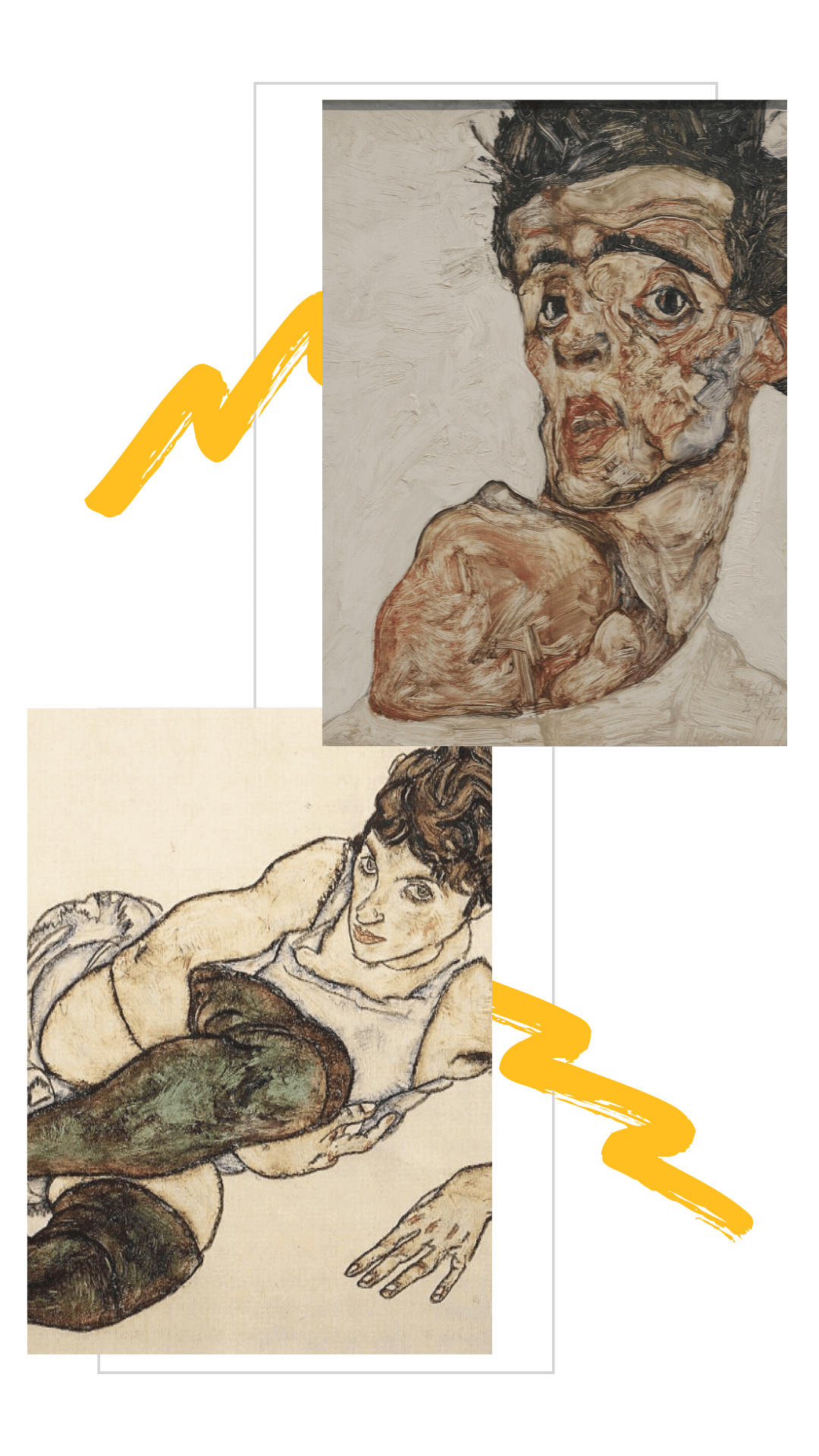
That same year, he met Valerie Neuzil, called "Wally", who would become his wife, his model and his inspiration.
Settled in the village of Krumau, they are however quickly driven out by people tired of seeing Neuzil naked in the garden posing for Schiele.
Exiled and isolated in Neulengbach, the artist was accused in 1912 of statutory rape and immorality in public through the distribution of his drawings.
After 21 days in custody and 3 days in prison, his sense of outrage and injustice is the strongest.
He realized at that time some of its most challenging designs and the most erotics.
EPHEMERAL SUCCESS IN HIS LIFETIME
After the wedding of her sister, and incidentally the first model, Gertrude, with Anton Peschka, one of his closest friends met at the Academy, Egon Schiele separates from Valerie Neuzil.
This approach of independence of his sister takes him still many months and this year, in 1915, he met and married Edith Harms.
Exempted from armed military service, his trait subsides along with his drawings.
His female models are less tortured, less acidic, better modeled.
The bodies do not break and no longer hide, his new wife who is his main model is certainly for something in it.
Returning to Vienna in 1917, shunned until then, the Austrian public is beginning to realize the value of Schiele.
His painting entitled The Family (1918) is the spearhead of evolution.
Invited to participate in the 49th Secession exhibition, he realizes the poster of the event and the great majority of the fifty paintings he exhibited are sold.
Orders are coming and he have then the same success in Zurich, Dresden and Prague.
28 years old, Egon Schiele painted in 1918 portrait of Gustav Klimt on his death bed.
A black year for the Austrian elite who loses in addition to Klimt, Otto Wagner, Kolo Moser and Egon Schiele ....
A few months after the death of Gustav Klimt, of pneumonia, the wife of Schiele died of a Spanish flu that will take away Egon three days later, October 31, 1918.
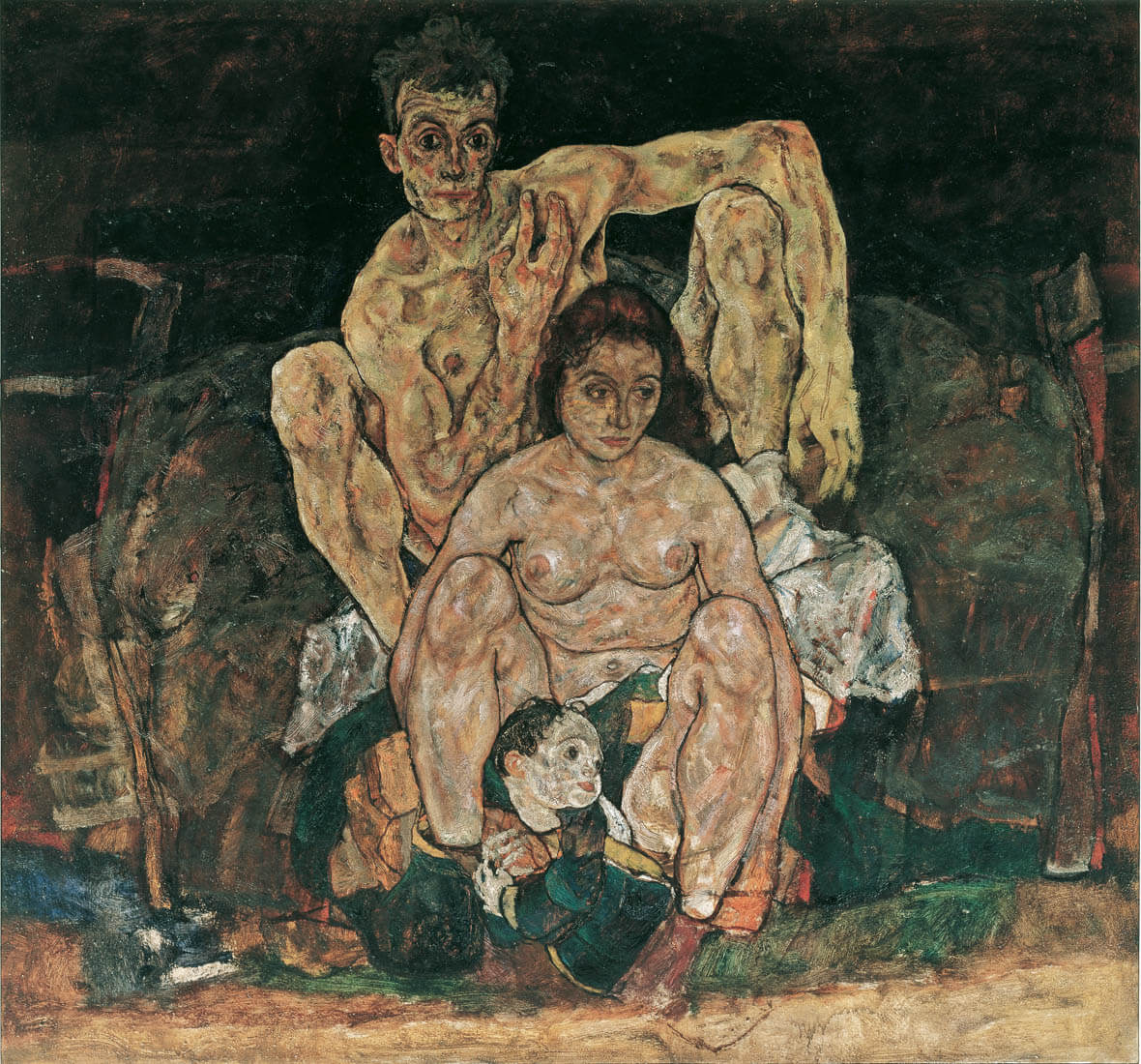
Today, the vast majority of works by Schiele are at the Leopold Museum in Vienna.
From the private collection of Rudolf and Elisabeth Leopold, the couple released several artworks by Schiele.
Haüser bunter Wäsche (1914) was sold in 2011 for EUR 27.6 million, while in 2013 three works on paper reached record amounts for these media, assigned to respectively EUR 1.2 million, 6 million and 9 million.
Still walking in the golden footsteps of Gustav Klimt, Egon Schiele became a famous name on the lands of Freud, Mozart and Schubert.
YO, THE PASSION OF THE LIVING MODEL
Launched by a father passionate with illustrators and cartoonists of the twentieth century, Yo performs first as a lawyer for ten years before devoting herself definitively to drawing and painting.
Passionated by bodies and living models, influenced by Surrealist movement of the twentieth century, this is the expression of the body and of the pain in the drawings by Egon Schiele that mark the artist.
The body is the starting point of her work, she draws in the presence of living models with which she likes to share.
Working on instinct with different materials (ink, pencil, acrylic), she handles bamboo, pen, knife or fingers.
Yo combines her energy and the one of her models to draw with instinct and precision, movements and attitudes of the body. Her drawings are traces of a meeting, a time of sharing, a moment of life.
THE NEO-COLLECTOR'S GUIDE
Everything you always wanted to know about the art market but were afraid to ask!
The art market often appears to be a domain reserved for a privileged few...
This is not true: accessible to all, the art market is only waiting for its new collectors.
For those who still have a doubt :
Here are the answers to the questions commonly asked!
What is a work of art?
What is the purpose of art?
What is the purpose of a certificate of authenticity?
What should you look out for when buying a work of art?


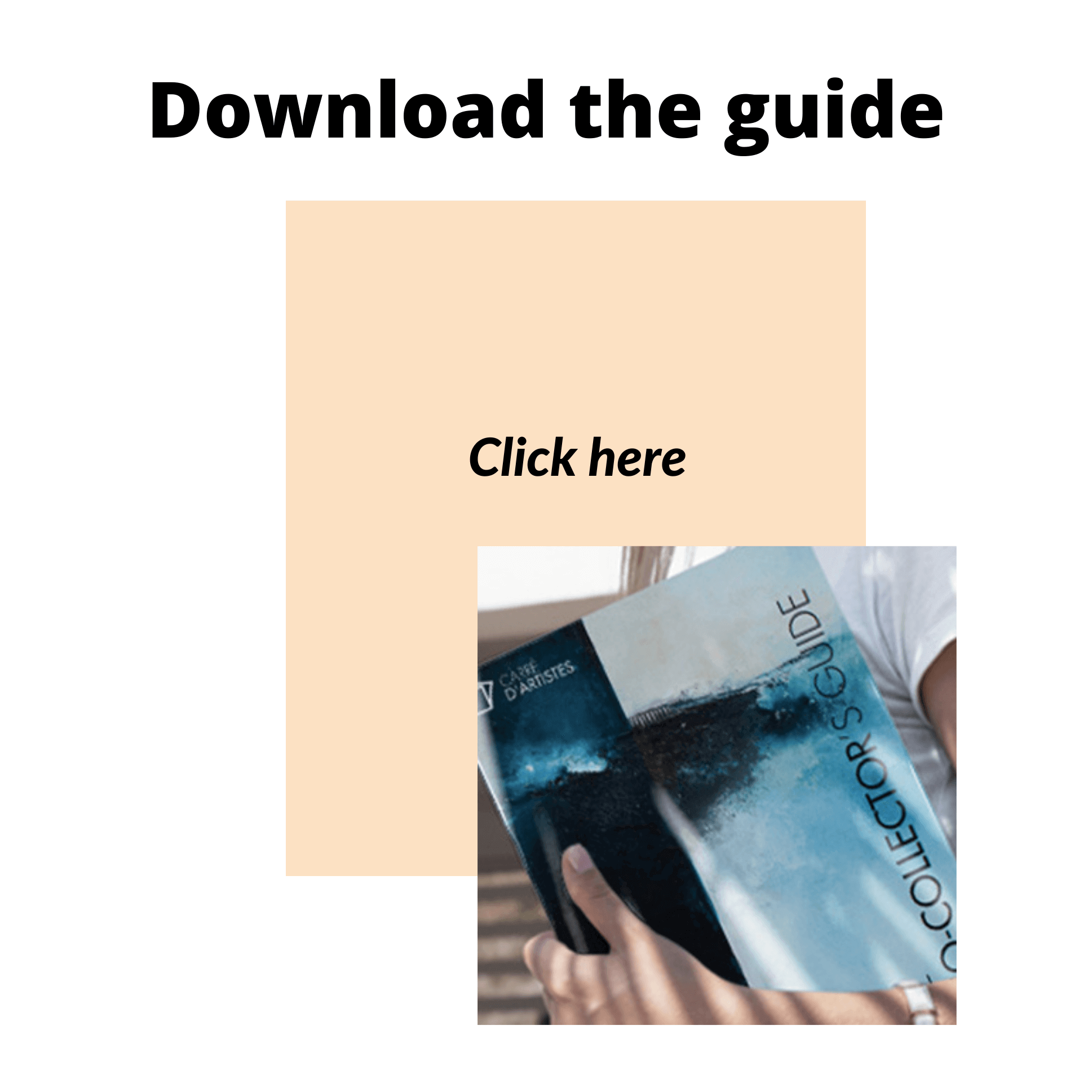





.png)







